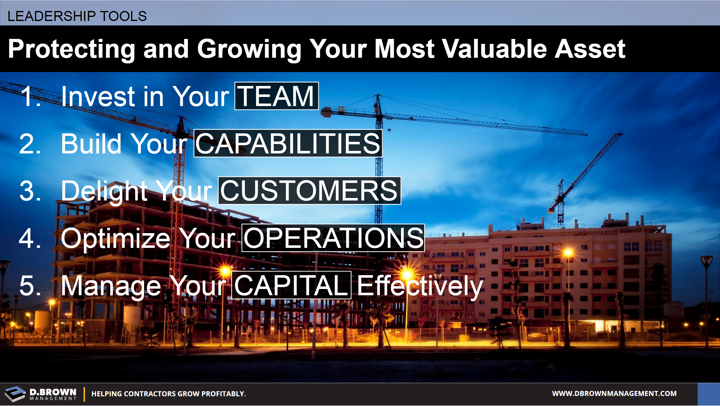- Invest in building a management team that can not only manage the business without you but can actually accelerate growth.
- Invest in building operational capabilities for project types and customers that have barriers to entry from competitors.
- Delight your customers building a strong reputation and recurring work.
- Optimize your operations through training, equipment, technology and process improvements to be extremely competitive.
- Manage your capital effectively minimizing cash tied up for operations.
There is no deal structure that can be put together for a succession that will create value. Deal structures can transfer value efficiently but cannot create value.
True value is only created by constantly pulling on all of these levers making them part of the DNA of the business. We help contractors in all these areas.

